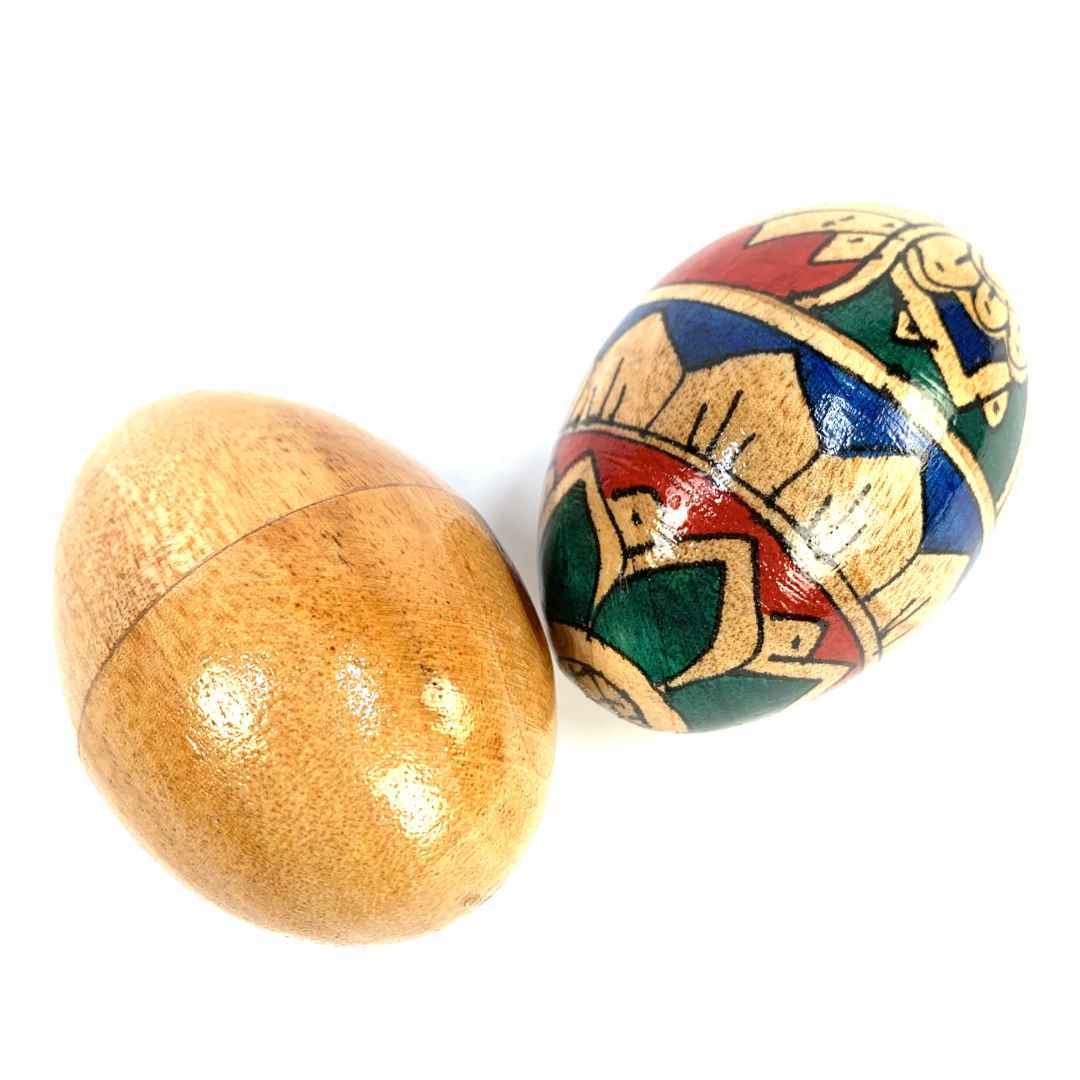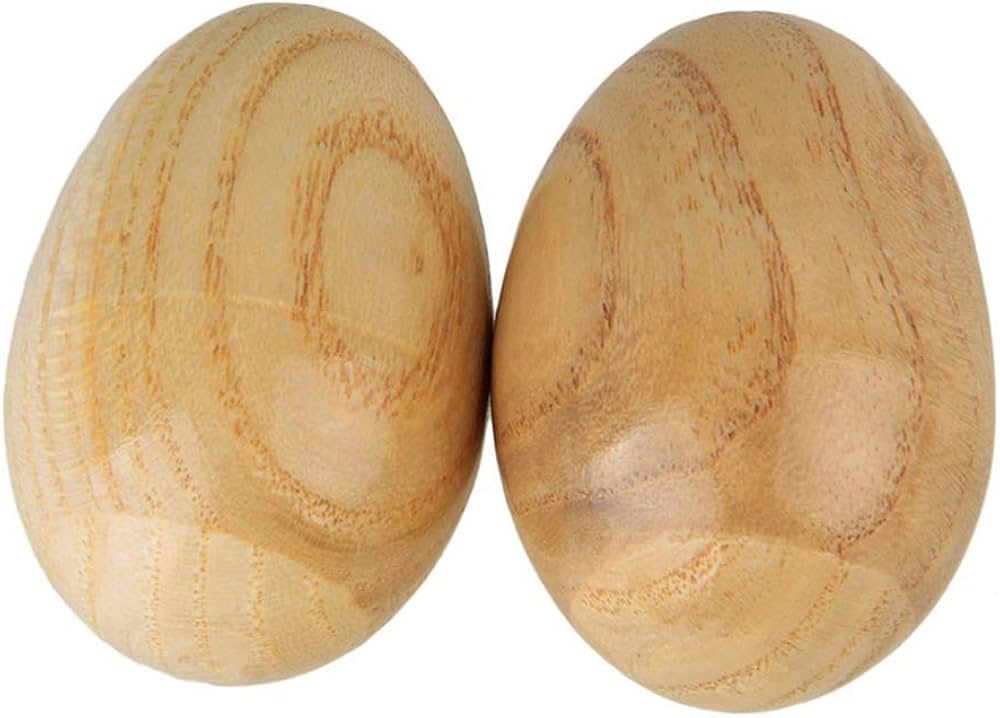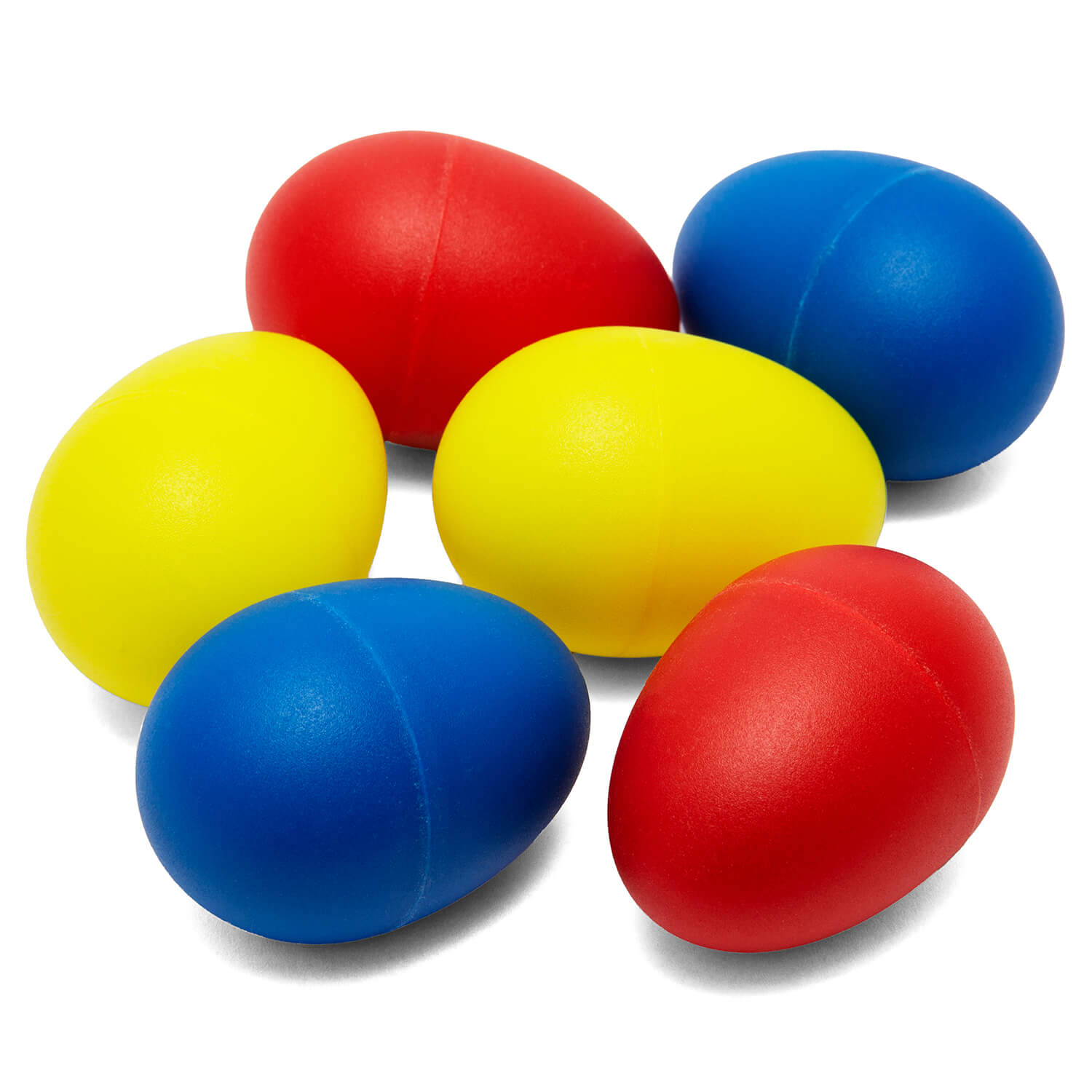Egg shaker
Percussions
Africa
Ancient
Video
The Egg shaker, also known as a ganzá, is a simple yet versatile handheld percussion instrument classified as an idiophone. Its design, sound production, and wide range of uses make it a favorite among musicians and educators alike. The egg shaker has a rich history rooted in ancient traditions and has evolved into a modern, versatile percussion instrument. Its journey through time reflects the adaptability and ingenuity of human music-making.
Origins
The concept of shakers, including the egg shaker, dates back to ancient civilizations. Early versions of shakers were crafted by various cultures using hollow gourds filled with seeds, pebbles, or small stones. These instruments were particularly prominent in African tribal communities, where they played a central role in rituals, celebrations, and storytelling. The rhythmic sounds created by these shakers symbolized harmony and were often used to accompany dances and spiritual ceremonies. Similar instruments also appeared in other parts of the world, including South America, where indigenous peoples adapted natural materials to create comparable percussive devices.
Characteristics
The egg shaker is named for its distinctive ovoid or egg-like shape, typically crafted from durable materials like plastic or wood. Inside, the instrument contains small, loose objects such as seeds, beads, or metal pellets, which move freely within the hollow shell. Sound is produced when the shaker is moved, causing the internal contents to collide with one another and the container walls. Players can vary the sound by adjusting their shaking technique: rapid, vertical shaking produces fast, rhythmic patterns, while horizontal or side-to-side movements create softer, more nuanced tones.
Uses
Musical Applications
Egg shakers are commonly used across a wide variety of musical genres, including folk, rock, samba, and mariachi, among others. Their rhythmic versatility allows them to blend seamlessly with other instruments, adding subtle texture or dynamic energy to a performance. Egg shakers are often used in acoustic or unplugged settings, where their gentle yet distinct sound complements other percussive elements.
Educational Settings
The egg shaker is a staple in music education, especially for young learners. Its small size, lightweight design, and engaging sound make it ideal for children to explore rhythm and timing. They are easy to handle and require no complex techniques, making them accessible to beginners and fun for group activities.
Construction
Egg shakers are typically constructed from two interlocking plastic halves, securely sealed to create a durable, hollow container. Inside, small filling materials like metal beads, rice, or seeds provide the sound-producing elements. They come in a variety of sizes, colors, and designs, making them visually appealing as well as functional.
For those interested in crafting their egg shaker, DIY options are popular and simple to create. Plastic Easter eggs can be filled with materials like rice, beans, or lentils and sealed with tape or glue, providing an inexpensive and enjoyable way to introduce music-making to children.
The egg shaker is a small but impactful percussion instrument, known for its simplicity, portability, and versatility. Its ability to add rhythmic layers to music while being accessible to musicians of all ages and skill levels has made it a global favorite. Whether enhancing a professional performance or serving as a fun, educational tool for teaching rhythm, the egg shaker remains a timeless and indispensable part of the percussion family.
FAQ
What materials is a Egg shaker made of?
A shaker is typically made of a hollow container filled with small objects that produce sound when shaken. The container can be made of wood, plastic, metal, or gourds, while the filling often includes seeds, beads, pebbles, or metal pellets. The combination of materials influences the shaker's tone, volume, and texture, making it versatile for various musical styles.
What is the Egg shaker used for?
The egg shaker is a small percussion instrument used to create rhythmic accents in music. It is played by shaking, producing a soft, crisp sound that complements various musical styles. Common in Latin, pop, and acoustic settings, the egg shaker is often used to keep time or add subtle texture to a song.
What's inside Egg shakers?
Egg shakers are small, egg-shaped percussion instruments filled with tiny materials like metal beads, seeds, or plastic pellets. These fillings create a soft, crisp sound when the shaker is moved. The choice of filling material can subtly affect the tone and volume of the shaker.
How to make an Egg rattle?
To make an egg rattle, take a plastic Easter egg and fill it with small items like rice, beans, beads, or sand. Close the egg securely, using tape or glue to ensure it stays sealed during use. Shake it to produce rhythmic sounds, adjusting the filling for different tones. Decorate if desired for a personal touch.
 Links
Links
References
Other Instrument
Categories




















